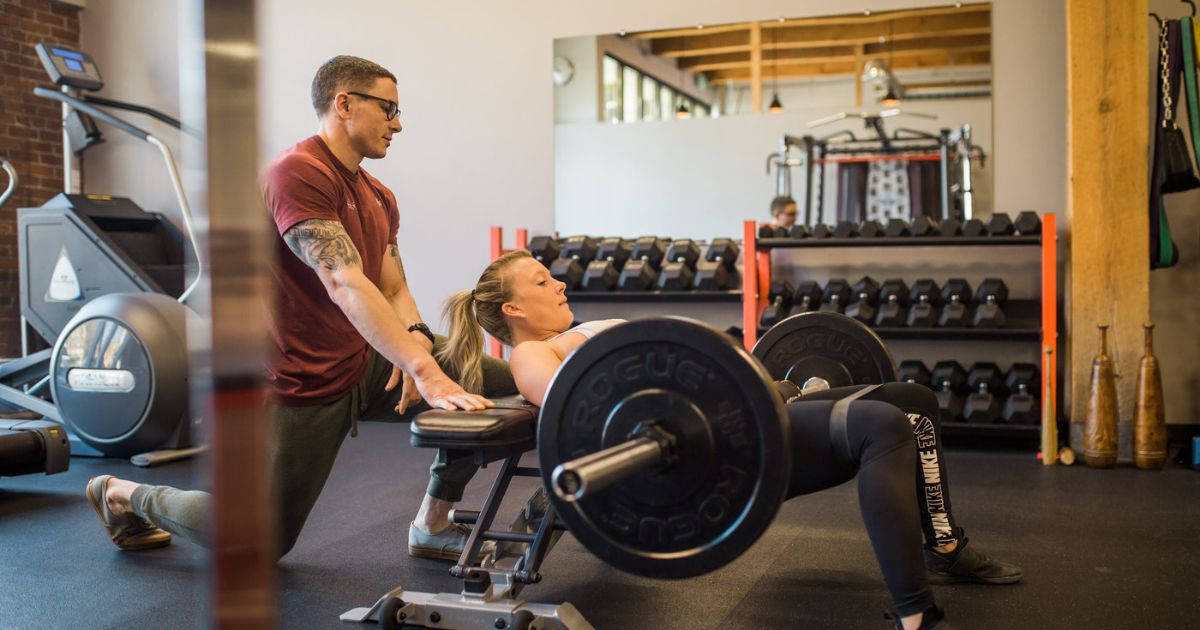Introduction:
Glute development has become a focal point in the fitness world, with enthusiasts striving for sculpted and powerful posterior chains. Among the array of exercises aimed at targeting the glutes, two standouts have gained significant attention: the kettlebell-assisted glute bridge and the hip thrust. In this comprehensive guide, we embark on a journey to unravel the nuances of these exercises, examining their mechanics, benefits, and suitability for various fitness goals. Whether you’re a seasoned gym-goer or a newcomer to the fitness scene, understanding the intricacies of these exercises can unlock the key to unlocking your glute potential.
Glute Anatomy and Function:
Before diving into the specifics of kettlebell-assisted glute bridge and hip thrust exercises, it’s essential to grasp the anatomy and function of the gluteal muscles. The glutes, comprised of the gluteus maximus, gluteus medius, and gluteus minimus, play a pivotal role in various movements, including hip extension, abduction, and external rotation. Strong glutes not only contribute to aesthetics but also support stability, posture, and athletic performance. By targeting these muscles with purposeful exercises, individuals can enhance their overall strength, power, and functional capacity.
Understanding Glute Bridge and Hip Thrust Exercises:
At the core of glute-focused training lie the kettlebell-assisted glute bridge and hip thrust exercises, each offering unique benefits and challenges. The kettlebell-assisted glute bridge involves lying on your back with knees bent, feet flat on the ground, and a kettlebell placed on the hips for added resistance. By driving through the heels and engaging the glutes, individuals lift their hips towards the ceiling, creating a straight line from shoulders to knees. On the other hand, the hip thrust takes a similar movement pattern but elevates the torso on a bench or platform, emphasizing hip extension and maximizing glute activation. Both exercises target the gluteal muscles but differ in range of motion and muscle recruitment patterns.
Form and Technique:
Executing kettlebell-assisted glute bridge and hip thrust exercises with proper form and technique is paramount to ensure optimal muscle engagement and minimize the risk of injury. When performing the kettlebell-assisted glute bridge, focus on maintaining a neutral spine, engaging the core, and driving through the heels to lift the hips. Avoid overarching the lower back or allowing the knees to cave inward, as this can place undue stress on the lumbar spine and hip joints. Similarly, during the hip thrust, ensure that the upper back is supported against a bench, feet are planted firmly on the ground, and the movement is initiated from the hips rather than the lower back. Paying attention to alignment and muscle activation cues can enhance the effectiveness of these exercises and accelerate progress towards your fitness goals.
Benefits of Glute Bridge and Hip Thrust Exercises:
Both the kettlebell-assisted glute bridge and hip thrust offer a myriad of benefits for glute development, strength, and functional movement. These exercises not only target the gluteal muscles but also engage the hamstrings, lower back, and core stabilizers, making them efficient compound movements. By incorporating kettlebell-assisted glute bridge and hip thrust exercises into your training routine, you can improve hip stability, enhance athletic performance, and reduce the risk of injury. Additionally, these exercises are scalable to accommodate individuals of all fitness levels, from beginners to advanced athletes, by adjusting resistance, volume, and intensity. Whether your goal is to build muscle, improve strength, or enhance athletic performance, kettlebell-assisted glute bridge and hip thrust exercises offer a versatile and effective solution for achieving glute gains.
Equipment and Setup:
One of the advantages of kettlebell-assisted glute bridge and hip thrust exercises is their minimal equipment requirement, making them accessible options for home workouts or gym sessions. For the kettlebell-assisted glute bridge, all you need is a kettlebell of appropriate weight to provide resistance. Alternatively, a dumbbell or resistance band can be used as a substitute. Similarly, the hip thrust can be performed using a barbell loaded with weight plates, although variations using resistance bands or body weight can also be effective. When setting up for these exercises, ensure that you have a stable surface, such as a yoga mat or weight bench, and adjust the equipment to align with your body’s anatomy. By investing in a few basic pieces of equipment and mastering proper setup techniques, you can reap the benefits of these exercises without breaking the bank or sacrificing convenience.
Muscle Activation and Engagement:
Understanding the biomechanics of kettlebell-assisted glute bridge and hip thrust exercises provides insight into the specific muscles targeted and the extent of their activation. During the kettlebell-assisted glute bridge, the primary emphasis is on hip extension, activating the gluteus maximus to drive the movement. Additionally, the hamstrings and lower back muscles act as synergists to stabilize the pelvis and maintain alignment throughout the exercise. Conversely, the hip thrust places greater emphasis on hip hyperextension, eliciting maximal recruitment of the glute muscles. Research suggests that the hip thrust elicits higher levels of glute activation compared to the glute bridge, making it a potent tool for those seeking to maximize glute gains. By focusing on proper form, mind-muscle connection, and progressive overload, individuals can optimize muscle activation and achieve greater results from these exercises.
Variations and Progressions:
To prevent plateaus and continue challenging the glutes, incorporating variations and progressions into your training routine is essential. For the kettlebell-assisted glute bridge, variations such as single-leg bridges or elevated feet bridges can intensify the exercise and target different areas of the glutes. Progressions may include using heavier kettlebells or increasing the duration of holds at the top of the movement. Similarly, the hip thrust offers a plethora of variations, including single-leg hip thrusts, banded hip thrusts, or using unstable surfaces for added instability and proprioceptive challenge. Progressions may involve increasing resistance, altering foot placement, or incorporating pauses and tempo changes to enhance muscle recruitment. By continually challenging your muscles with new stimuli, you can stimulate growth, improve strength, and overcome training plateaus.
You read also more : alienware pc
Strength and Hypertrophy Benefits:
Both the kettlebell-assisted glute bridge and hip thrust are effective tools for building strength and promoting hypertrophy in the glute muscles. The kettlebell-assisted glute bridge primarily targets muscular endurance and stabilization, making it suitable for individuals of all fitness levels. By progressively overloading the movement with heavier weights or increasing volume, one can stimulate muscle growth and enhance glute strength. Conversely, the hip thrust, with its emphasis on hip hyperextension and maximal glute activation, is well-suited for hypertrophy-focused training. By utilizing heavier loads and incorporating intensity techniques such as drop sets or rest-pause sets, individuals can stimulate muscle growth and achieve significant gains in glute size and strength. By incorporating both exercises into a comprehensive training program, you can reap the benefits of improved strength, size, and function in the glutes.



